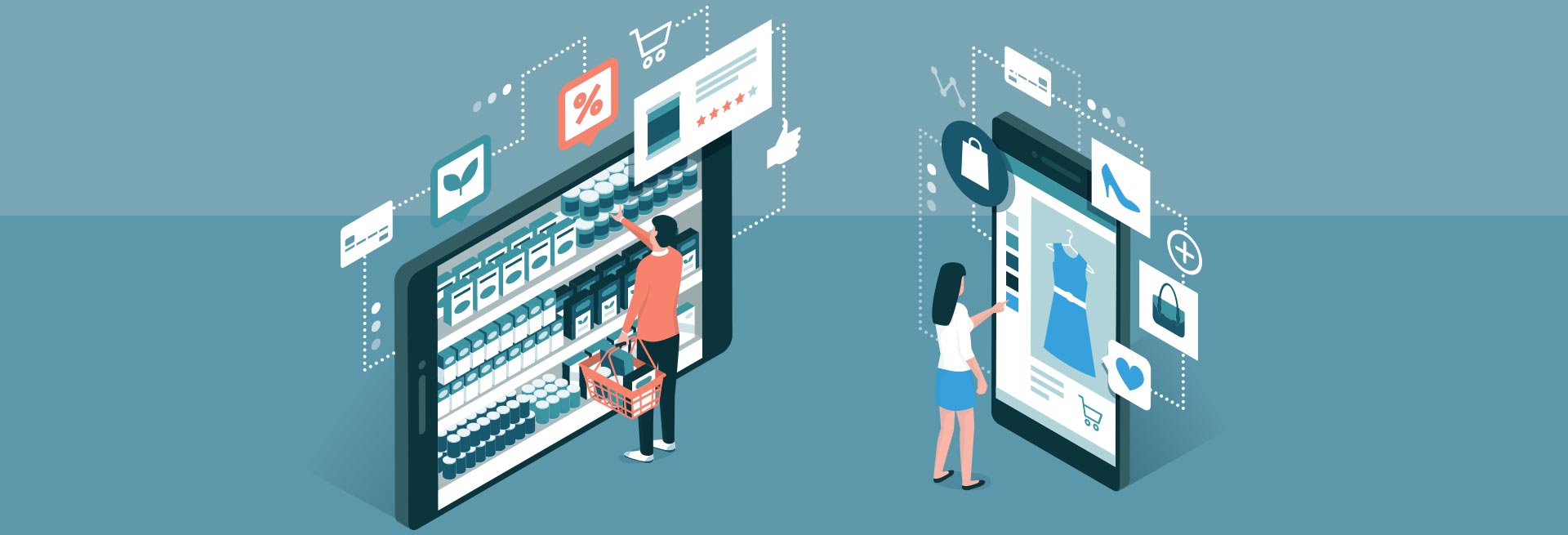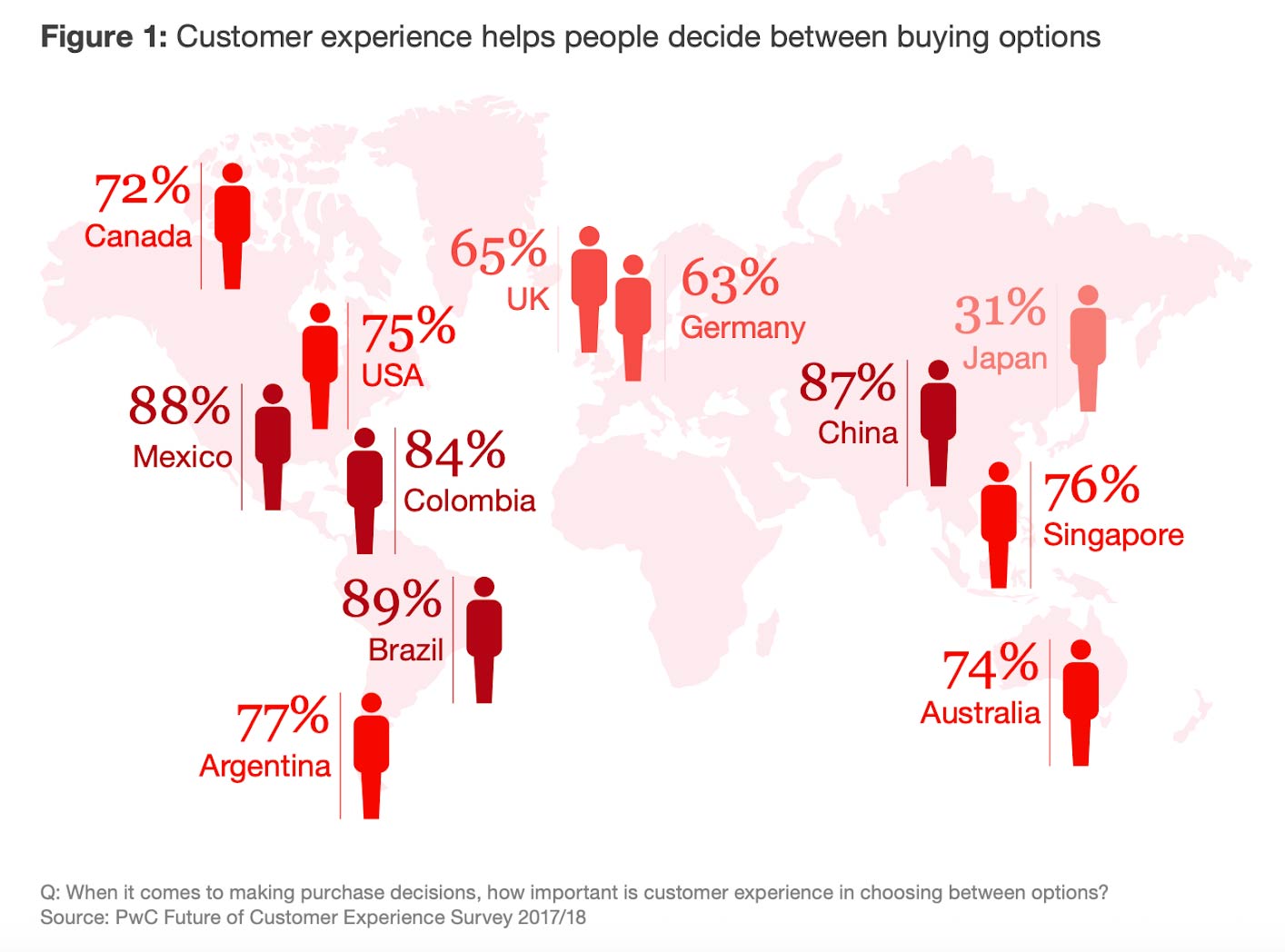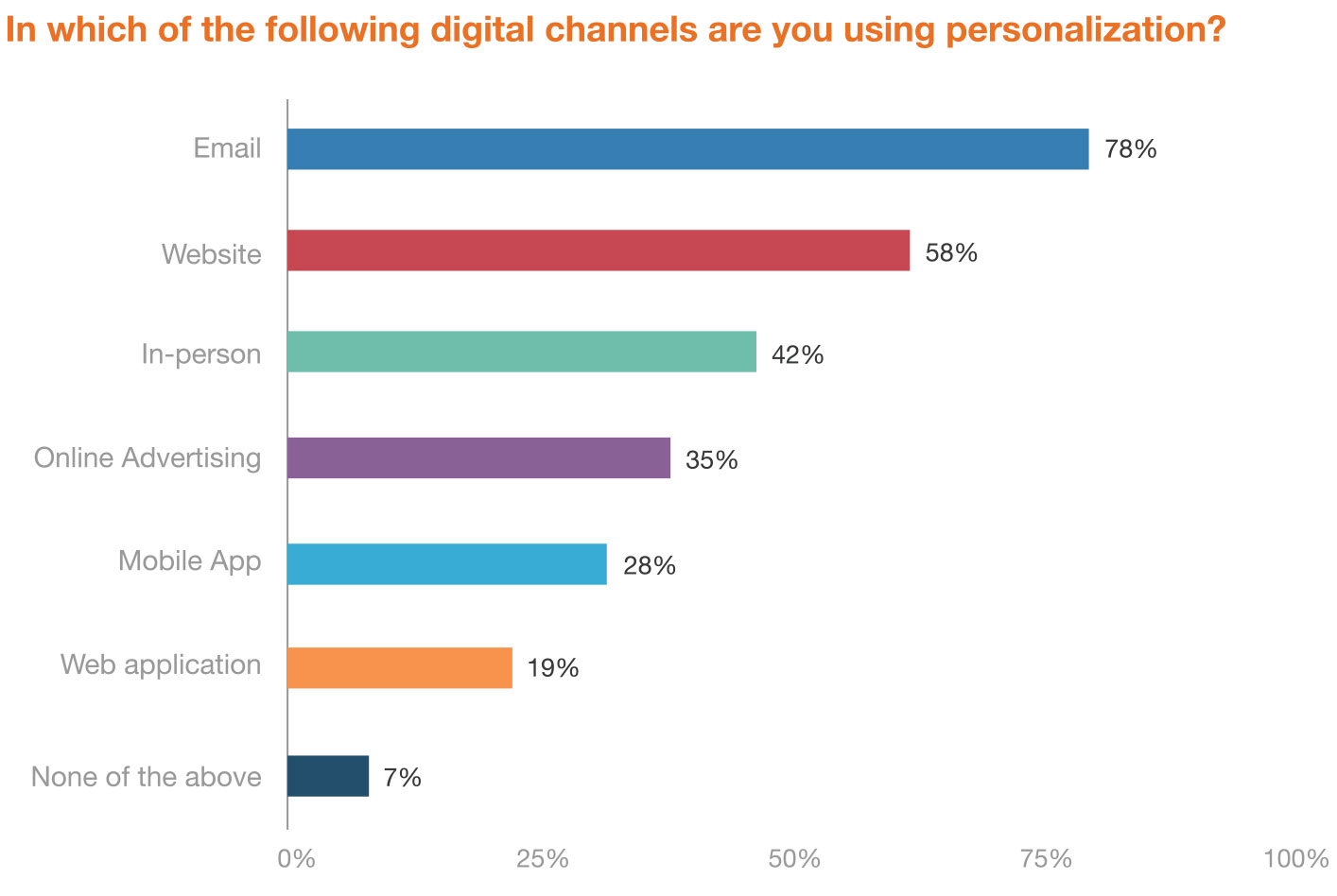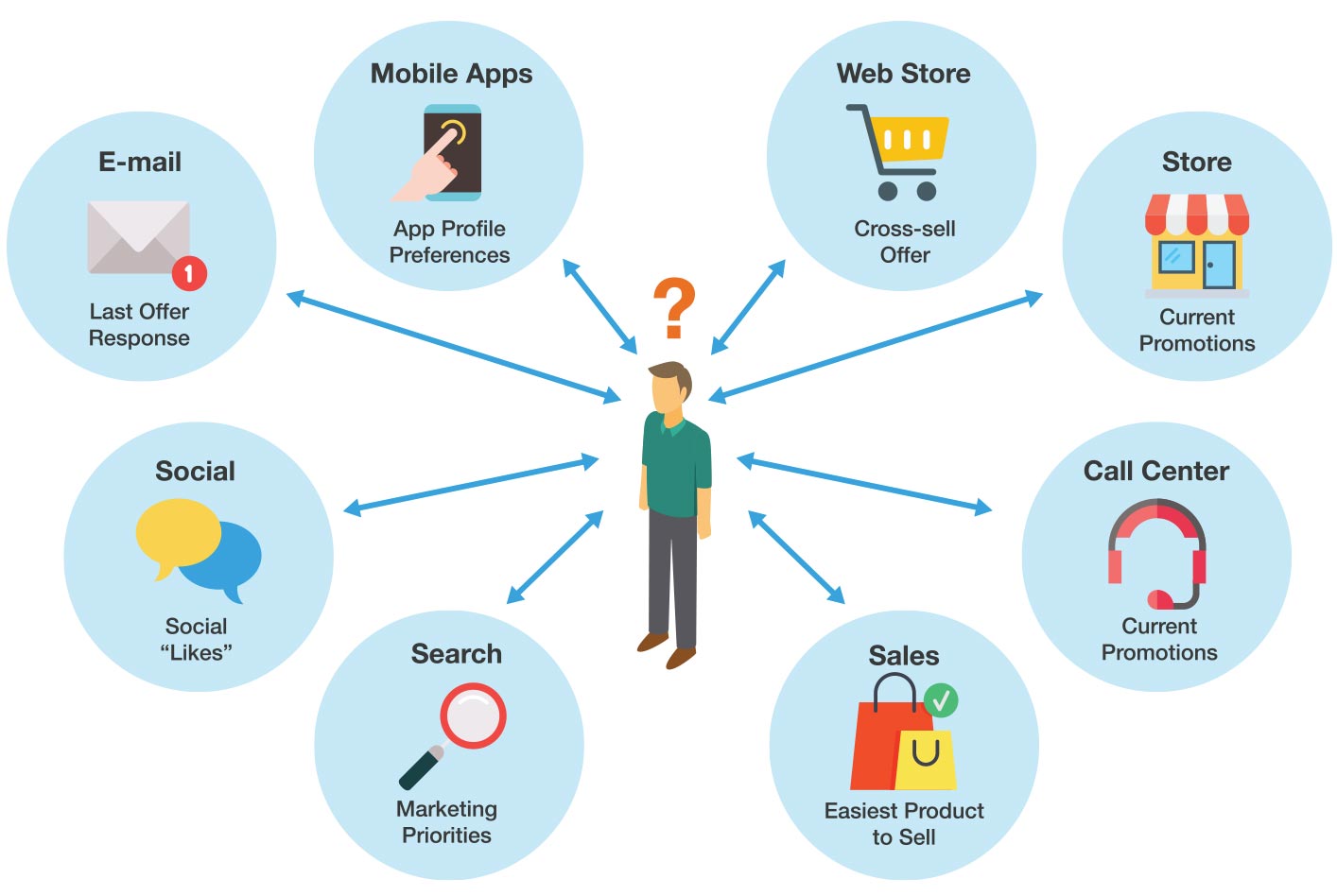Analytics Blog

Achieve True Omni-Channel Personalization with a Customer Data Platform (CDP)
Over the past couple of years, there’s been a number of studies consistently highlighting how the customer experience impacts the customer’s decision to purchase.

Overall, brands with a great customer experience tend to see a positive impact on their primary key performance indicators (KPIs), such as higher revenue. What’s increasingly apparent is the role that personalization plays in meeting and exceeding customer expectations. Companies are getting better at activating data for personalization within certain channels.
For example, the 2019 Trends in Personalization Report highlights that email is the most popular method for personalization.

Unfortunately, many times these personalization efforts are siloed. The risk with taking a siloed approach to personalization is that decisions are likely being made based on an incomplete view of the customer. This, in turn, increases the risk of presenting users with a subpar customer experience.
The risk with taking a siloed approach to personalization is that decisions are likely being made based on an incomplete view of the customer. Click & Tweet!
For example, assume a customer purchased a product online but decided to return it in-store. When the customer visits the website again, it continues to display cross-sell offers tied to that product. Furthermore, the customer continues to receive emails with content related to a previous purchase. These siloed personalization efforts can lead to a fragmented experience as customers navigate across these different channels, which can lead to increased customer frustration.

Ultimately, while organizations understand the importance of personalization, there’s still a noticeable gap between knowing this and having the ability to successfully activate across all online and offline experiences. Therefore, it’s not surprising that the 2019 Trends in Personalization Report found that only 16% of marketers are very or extremely satisfied with their personalization efforts.
One of the main challenges for organizations is the orchestration and sharing of data across channels to support omni-channel personalization. In the report, feedback regarding challenges with personalization included, “We could be doing more, but there’s always a struggle with data that seems to hold us back.”
One effective way to overcome this challenge is using a Customer Data Platform (CDP). In fact, according to the Forbes Insights report (The Clear Path to Personalization: Delivering Superior Experiences, One Customer At A Time), of those respondents identified as personalization leaders (21% of the total), 76% of these leaders highlighted that a customer data platform was a key part of their personalization efforts, compared to 53% for the rest.
Unify and Activate Your Customer Data with a CDP
According to the CDP Institute, “a customer data platform is packaged software that creates a persistent, unified customer database that’s accessible to other systems.” In other words, it’s technology that unifies your data, allowing for a single view of your customer that can be shared across your organization’s systems.
For a more detailed overview of CDPs, including how they differ from Data Management Platforms (DMPs), read “What is the Difference Between a DMP and CDP, and Do I Need One?”
While there are a number of CDPs available on the market, even the most basic CDP will help unify data from your customer relationship management (CRM) system, email marketing platform, website, and mobile app — making it easily accessible across the organization. However, creating customer profiles within a CDP will only benefit the customer experience if your organization acts on the data. Simply put, for true personalization, it’s not enough to know who your customers are. These insights need to be put into action.
The more advanced CDPs can help achieve omni-channel personalization in several different ways. First, these CDPs give your organization the ability to personalize based on data sources that previously may not have been readily accessible for personalization efforts, such as offline data sources. Incorporating previous offline engagement helps ensure that personalized content is truly based on the full customer profile.

In addition, having unified data in a CDP available in real time means that your personalization efforts can also be done in real time, whether it’s the CDP taking action itself to push content or the CDP sharing this real-time data with another system to activate personalization.
A key benefit here is that your personalization efforts aren’t siloed to one channel. Instead, the CDP gives your organization the ability to activate real-time personalization even as customers hop back and forth between different channels.
Finally, many CDPs will provide your organization with the ability to execute both rule-based personalization (also known as manual segmentation) and machine learning personalization (also referred to as automated decisioning). Rule-based personalization allows your teams to manually create segments that group a subset of users based on attributes or behavior. The rules will then determine what customized experience to present to these users.
In contrast, machine learning personalization leverages algorithms and predictive analytics to dynamically present relevant content to users. Having machine learning capabilities is a must for organizations looking to scale their efforts and successfully execute 1:1 personalization. Ultimately, a solid personalization strategy incorporates both rule-based and machine learning personalization. Therefore, you’ll want to ensure that your CDP can support both capabilities.
Strategy is Key to Successfully Activating Customer Data
In general, organizations that are most successful with personalization understand that having a solid strategy in place is key. The 2019 Trends in Personalization Report highlights that only 18% of marketers are very or extremely confident in their personalization strategy. Thus, it’s no surprise that even with having the right technology in place, organizations still struggle to activate data for omni-channel personalization.
…only 18% of marketers are very or extremely confident in their personalization strategy Click & Tweet!
For organizations that currently have a CDP implemented, often the issue is that personalization is utilized as an internal function and teams fail to activate across other platforms, especially if those other platforms are managed by an agency. The end result is that customers may have a sub-optimal experience, such as seeing irrelevant content or receiving messages too frequently. Having a CDP as the center for all activation allows your teams to execute a comprehensive strategy across all your activation methods and leverage valuable features within the CDP, such as advanced frequency capping rules, to provide a consistent and highly relevant experience for customers.
When personalization efforts are activated using a CDP, it’s imperative that your organization has a strong strategy in place at the onset. Your organization should have a very clear view of the business needs and initial use cases to improve the customer experience prior to implementing a CDP. Taking the shotgun approach by just getting all of the data in the CDP and then trying to figure out the details later will increase the chances of issues happening, such as poor data quality or data paralysis, that can negatively impact your personalization efforts.

Become a Leader with Omni-Channel Personalization
As highlighted earlier, the majority of leaders in personalization utilize a CDP in improving the customer experience. If your organization is serious about meeting and exceeding the needs of your customers, then you should look to incorporate a CDP as part of your organization’s core marketing strategy. However, implementing a CDP alone won’t bring value to the customer experience. How your organization activates the data will determine the true impact for your customers and, ultimately, your primary KPIs.
Some organizations may attempt to rely solely on internal resources to implement a CDP and execute their omni-channel personalization. However, as mentioned earlier, a majority of marketing teams aren’t highly confident in their personalization strategy. As a result, relying only on internal resources could be a risky approach and one that could take far longer and cost more to realize the full potential of having a CDP.
Considering the challenges that exist with properly implementing and maintaining a CDP, including breaking down data silos, ensuring data quality, respecting increased customer privacy, and strategizing for the right data to include for identified use cases, it would be beneficial to collaborate with a trusted partner, such as Blast. Our CDP consultants have the technical expertise to implement a CDP of your choice and will collaborate with your team to execute an omni-channel personalization strategy.








